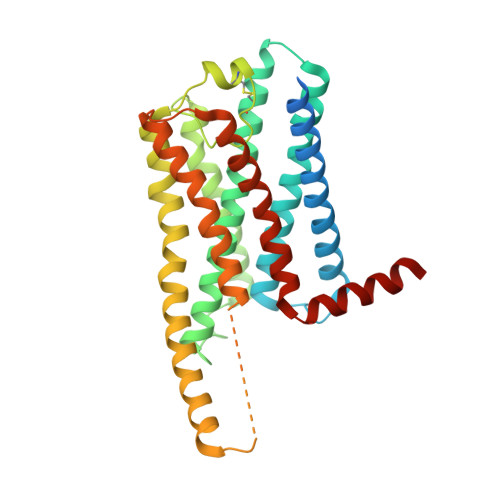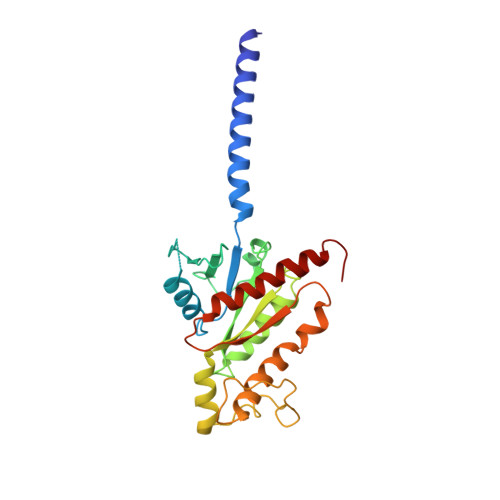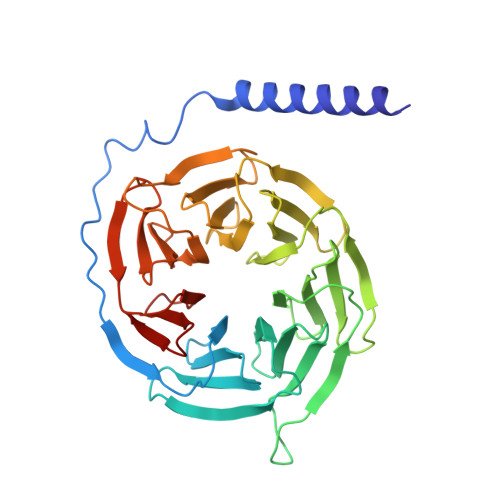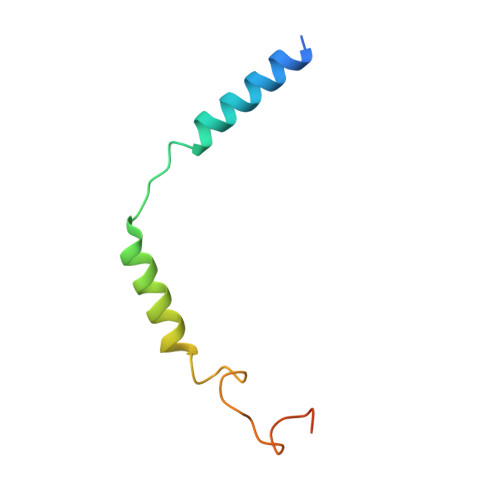Structural basis of ligand recognition and self-activation of orphan GPR52.
Lin, X., Li, M., Wang, N., Wu, Y., Luo, Z., Guo, S., Han, G.W., Li, S., Yue, Y., Wei, X., Xie, X., Chen, Y., Zhao, S., Wu, J., Lei, M., Xu, F.(2020) Nature 579: 152-157
- PubMed: 32076264
- DOI: https://doi.org/10.1038/s41586-020-2019-0
- Primary Citation of Related Structures:
6LI0, 6LI1, 6LI2, 6LI3 - PubMed Abstract:
GPR52 is a class-A orphan G-protein-coupled receptor that is highly expressed in the brain and represents a promising therapeutic target for the treatment of Huntington's disease and several psychiatric disorders 1,2 . Pathological malfunction of GPR52 signalling occurs primarily through the heterotrimeric G s protein 2 , but it is unclear how GPR52 and G s couple for signal transduction and whether a native ligand or other activating input is required. Here we present the high-resolution structures of human GPR52 in three states: a ligand-free state, a G s -coupled self-activation state and a potential allosteric ligand-bound state. Together, our structures reveal that extracellular loop 2 occupies the orthosteric binding pocket and operates as a built-in agonist, conferring an intrinsically high level of basal activity to GPR52 3 . A fully active state is achieved when G s is coupled to GPR52 in the absence of an external agonist. The receptor also features a side pocket for ligand binding. These insights into the structure and function of GPR52 could improve our understanding of other self-activated GPCRs, enable the identification of endogenous and tool ligands, and guide drug discovery efforts that target GPR52.
- iHuman Institute, ShanghaiTech University, Shanghai, China.
Organizational Affiliation:




















